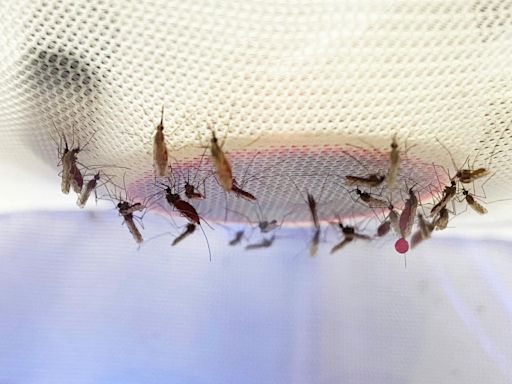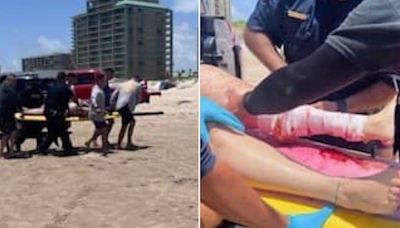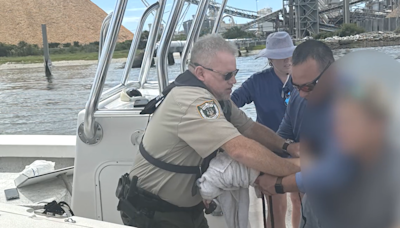Search results
Jul 18, 2021 · Blood Bite: Directed by Li'ang Wang. With Tara Clance, Lik-Sun Fong, Ziqing Liu, Li'ang Wang. After a great white shark, also known as an ogre shark, is injected with a transgenic drug, it becomes a dangerous bloodthirsty mutant that can outsmart even the king of nature.
- (152)
- Horror
- Li'ang Wang
- 2021-07-18
A highly cheesy Chinese killer shark extravaganza.
- Overview
- What causes blood poisoning?
- Who is at risk for blood poisoning
- Recognizing the symptoms of blood poisoning
- Diagnosing blood poisoning
- Treatment options for blood poisoning
- Long-term outlook and recovery
- Prevention
- GeneratedCaptionsTabForHeroSec
Blood poisoning, known in medical terms as sepsis, happens when bacteria that are causing an infection in another part of your body enter your bloodstream. Sepsis can be a life threatening infection, especially if it’s left untreated.
Blood poisoning is a serious infection. It occurs when bacteria are in the bloodstream.
Despite its name, the infection has nothing to do with poison. Although not a medical term, “blood poisoning” is used to describe bacteremia, septicemia, or sepsis.
Still, the name sounds dangerous, and for good reason. Sepsis is a serious, potentially fatal infection. Blood poisoning can progress to sepsis rapidly. Prompt diagnosis and treatment are essential for treating blood poisoning, but understanding your risk factors is the first step in preventing the condition.
Blood poisoning occurs when bacteria causing infection in another part of your body enter your bloodstream. The presence of bacteria in the blood is referred to as bacteremia or septicemia. The terms “septicemia” and “sepsis” are often used interchangeably, though technically they aren’t quite the same. Septicemia, the state of having bacteria in your blood, can lead to sepsis. Sepsis is a severe and often life-threatening state of infection if it’s left untreated. But any type of infection — whether bacterial, fungal, or viral — can cause sepsis. And these infectious agents don’t necessarily need to be in a person’s bloodstream to bring about sepsis.
Such infections most commonly occur in the lungs, abdomen, and urinary tract. Sepsis happens more often in people who are hospitalized, where the risk of infection is already higher.
Because blood poisoning occurs when bacteria enter your bloodstream in conjunction with another infection, you won’t develop sepsis without having an infection first.
Some common causes of infections that can cause sepsis include:
•abdominal infection
•an infected insect bite
Some people are more susceptible than others to sepsis. Those who are more at risk include:
•people with weakened immune systems, such as those with HIV, AIDS, or leukemia
•young children
•older adults
•people who use intravenous drugs such as heroin
•people with poor dental hygiene
The symptoms of blood poisoning include:
•chills
•moderate or high fever
•weakness
•rapid breathing
•increased heart rate or palpitations
It’s difficult to self-diagnose blood poisoning because its symptoms mimic those of other conditions. The best way to determine if you have septicemia is to see a doctor. First, your doctor will perform a physical exam, which will include checking your temperature and blood pressure.
If blood poisoning is suspected, your doctor will run tests to look for signs of bacterial infection. Septicemia can be inferred with these tests:
•blood culture testing
•blood oxygen levels
•blood count
•clotting factor
Prompt treatment of blood poisoning is essential because the infection can quickly spread to tissues or your heart valves. Once you’re diagnosed with blood poisoning, you’ll likely receive treatment as an inpatient at a hospital. If you’re showing symptoms of shock, you’ll be admitted to the intensive care unit. Signs of shock include:
•paleness
•rapid, weak pulse
•rapid, shallow breathing
•dizziness or unconsciousness
•low blood pressure
Blood poisoning can be a deadly condition. According to the Mayo Clinic, septic shock has a 50 percent mortality rate. Even if treatment is successful, sepsis can lead to permanent damage. Your risk for future infections may also be greater.
The more closely you follow your doctor’s treatment plan, the greater your chance of a full recovery. Early and aggressive treatment in a hospital intensive care unit increases the chances you’ll survive sepsis. Most people can make a full recovery from mild sepsis with no lasting complications. With the right care, you can be feeling better in as little as a week or two.
If you survive severe sepsis, however, you’re at risk of developing serious complications. Some long-term side effects of sepsis include:
•possible blood clots
•organ failure, requiring surgery or lifesaving measures to be administered
•tissue death (gangrene), requiring removal of the affected tissue or possibly amputation
The best way to prevent blood poisoning is to treat and prevent infections. It’s also important to prevent any open wounds from becoming infected in the first place with proper cleaning and bandaging.
If you’ve had surgery, your doctor will likely prescribe an antibiotic as a precautionary measure against infections.
Blood poisoning, or sepsis, is a serious infection caused by bacteria in the bloodstream. Learn about the causes, risk factors, symptoms, diagnosis, treatment, and prevention of this potentially fatal condition.
- Marissa Selner
- Mosquito bites. A mosquito bite is a small, round, puffy bump that appears soon after you’ve been bitten. The bump will become red, hard, swollen, and itchy.
- Fire ant bites. This condition is considered a medical emergency. Urgent care may be required. Fire ants are small, aggressive, red or black venomous ants with a painful, stinging bite.
- Flea bites. Flea bites are usually located in clusters on the lower legs and feet. The itchy, red bumps are surrounded by a red halo. Symptoms begin immediately after you’re bitten.
- Bedbug bites. The itchy rash is caused by an allergic reaction to the bedbug bite. The small rashes have red, swollen areas and dark-red centers.
Jun 26, 2018 · Learn how to recognize if a bite is infected and how to prevent this type of bite. We’ll also explain proper treatment options including first aid and medical assistance.
An accident causes a great white shark to turn into a killing mutant. However, the problem worsens when the beast receives the ability to overpower humans.
- Horror
An aquarium in need of a new attraction develops a deadly blood shark. It's smarter, faster, and more lethal, and now, it's on the loose.





